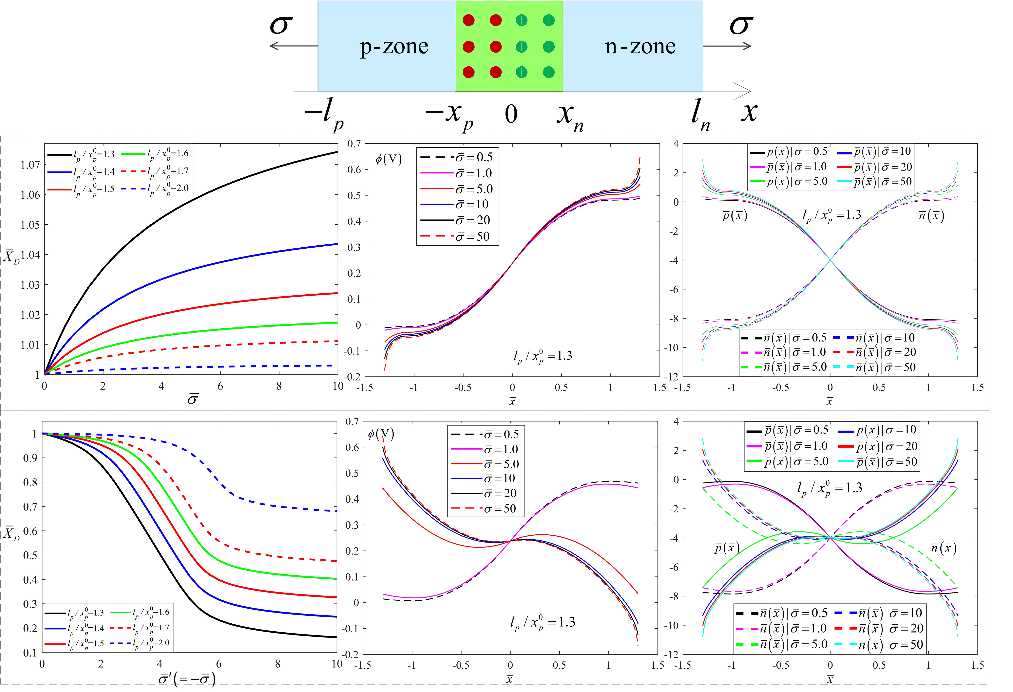Research by Yuantai Hu, professor with the HUST Department of Mechanics, and his PhD students, Shuaiqi Fan and Wanli Yang, has led to the creation of a new electro-mechanical model that better helps the adjustment and control on the fundamental characteristics of a piezoelectric PN junction by mechanical-loading. The study was published in the Aug. 16 edition of the journal Nano Energy (IF = 13.12).
PN junctions are elementary units of semiconductor devices. The analysis and control of this typical structure is essential for developing and designing semiconductor devices with new functions. Particularly when PN junction is piezoelectric, external loading or deformation will lead to a polarization electric field within the structure, and carriers will redistribute due to the electric field, thus, further changing performance of PN junction. A predictive electro-mechanical model of this complex behavior is critical for engineers to design piezoelectric semiconductor device with adjustable and controllable performance under the external mechanical-loading.

So HUST researchers established a new model that can couple mechanical field and electric potential field in a mechanically-loaded piezoelectric PN junction. This model, quantitatively predicting the relationship between electrical properties and stress/deformation, provides a theoretical basis for the adjustability and controllability of the performance of piezoelectric semiconductor device utilizing mechanical-loading. Further study indicated that a tensile stress or deformation enlarges space charge region and contact electric potential difference, and the concentration of majority carriers goes up and the one of minority carriers cuts down at the boundary such that the junction possesses higher barrier; a compressive stress or deformation shrinks space charge region and contact electric potential difference at the boundary, and the concentration of majority carriers reduces and the one of minority carriers rises such that the junction barrier decreases. Hu and his team also found that the closer the mechanical loading point is to the space charge region, the more obvious of its regulation effect is.
The work was funded by the National Natural Science Foundation of China and the Hubei Provincial Key Laboratory Project.
The article can be found at: https://authors.elsevier.com/c/1XZYZ7soS7qCdp
